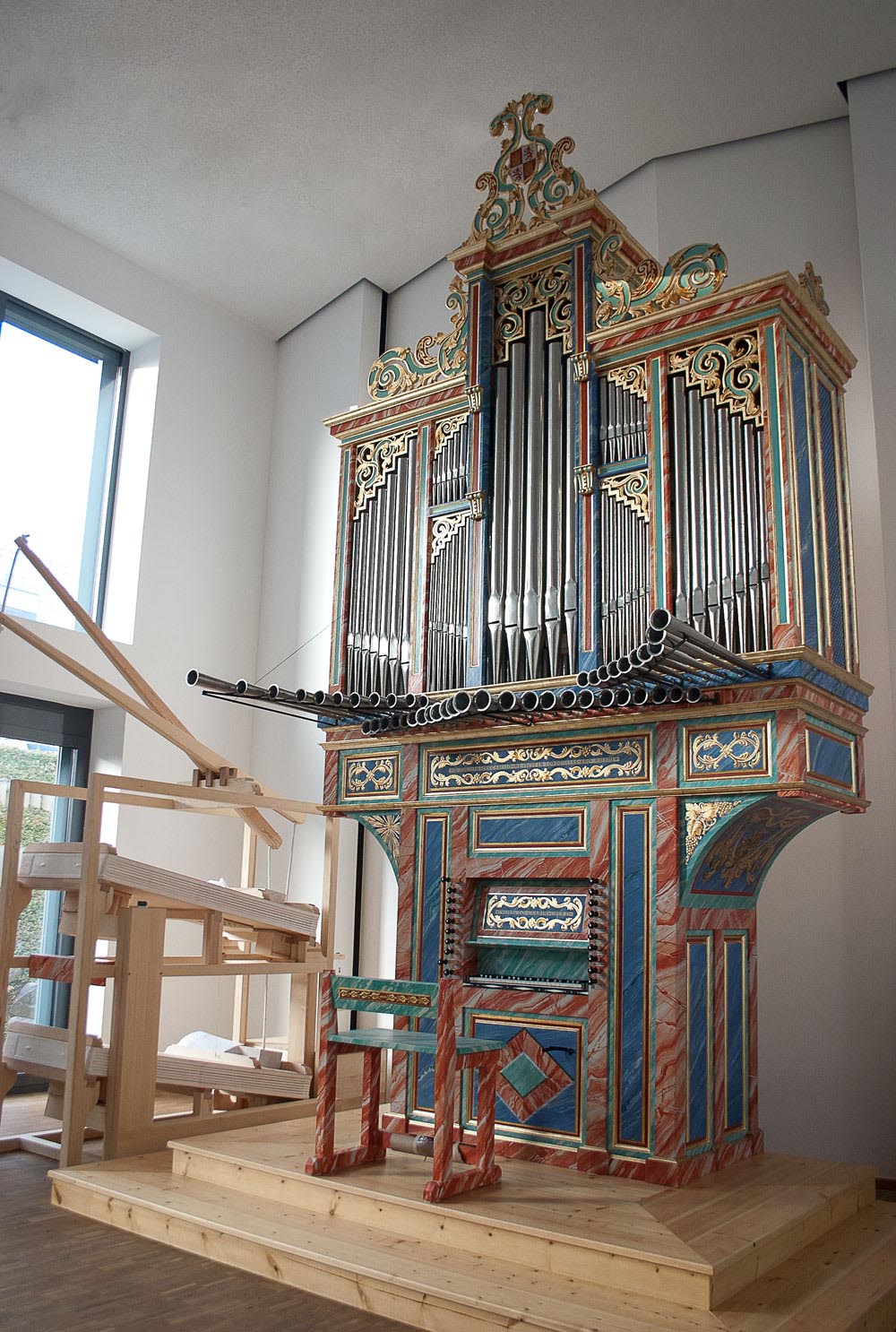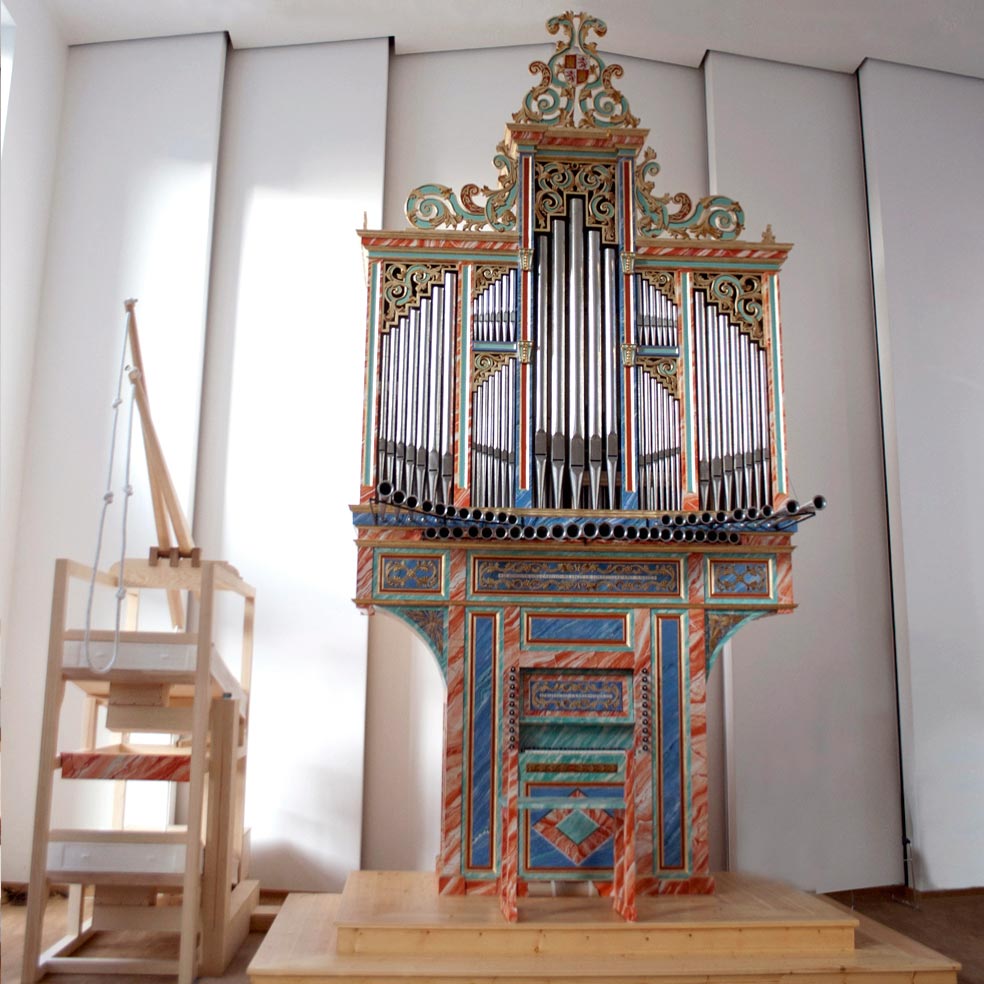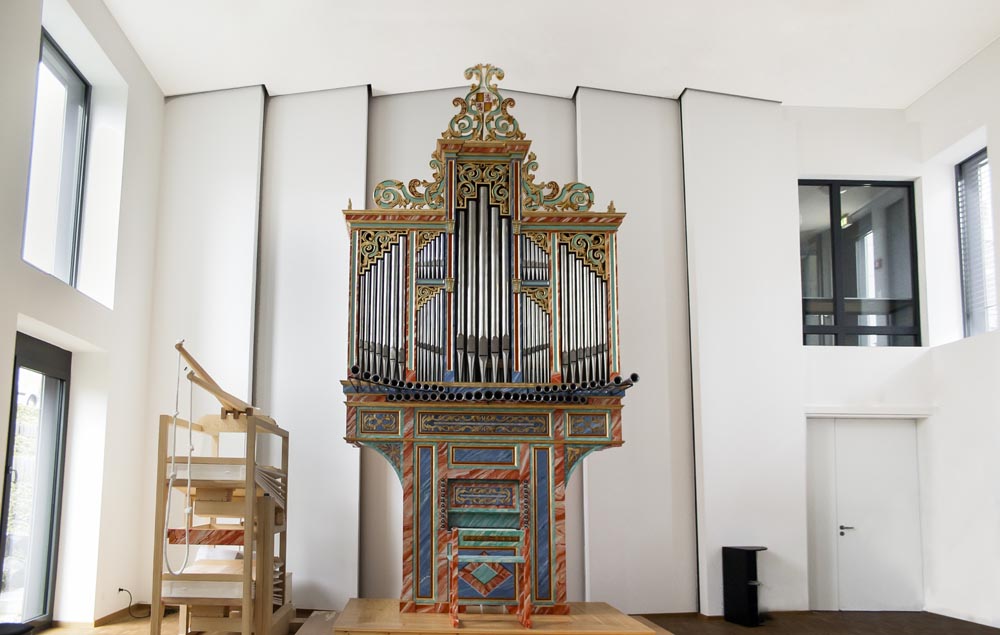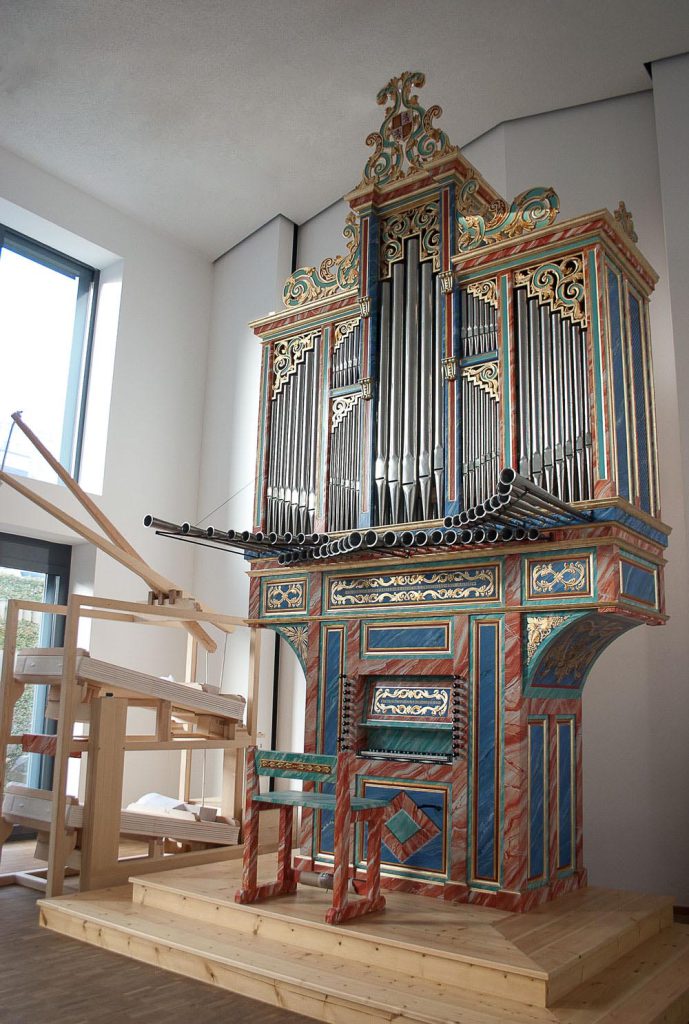Clarín Opus II
Mainz (Alemania)
2013
Organ Hall de la Hochschule für Musik Johannes Gutenberg-Universität
Upon request from the Hochschule für Musik in Mainz, this instrument was built following faithfully the aesthetics, musical features and technique of the Castilian organs from the 18th century. The fact that its main purpose is teaching proves its usefulness for the understanding of a specific repertoire as well as the features of the historical instruments of a very wide geographical area. It is also very useful for the study of the oldest repertoire of European music.
Disposition
- One manual keyboard of 45 notes. Short octave (C,D,E,E,G,A-c’’’)
- Divided stops, ten sets for each hand
| LEFT HAND | RIGHT HAND | |||
| Flautado de 13 | 8′ | Flautado de 13 | 8′ | |
| Octava | 4′ | Octava | 4′ | |
| Tapadillo | 4′ | Tapadillo | 4′ | |
| Docena | 2 2/3′ | Docena | 2 2/3′ | |
| Quincena | 2′ | Quincena | 2′ | |
| Diecisetena | 1 3/5′ | Decinovena | 1 1/3′ | |
| Decinovena | 1 1/3 | Lleno IV | ||
| Lleno IV | 1′ | Corneta VI | ||
| Bajoncillo* | 4′ | Clarín* | 8′ | |
| Trompeta Real | 8′ | Trompeta Real | 8′ | |
| in front facade* | ||||
Other characteristics
- Knee levers for Bajoncillo and Clarín
- Tuning pitch: A=415Hz.
- Temperament: classic meantone





